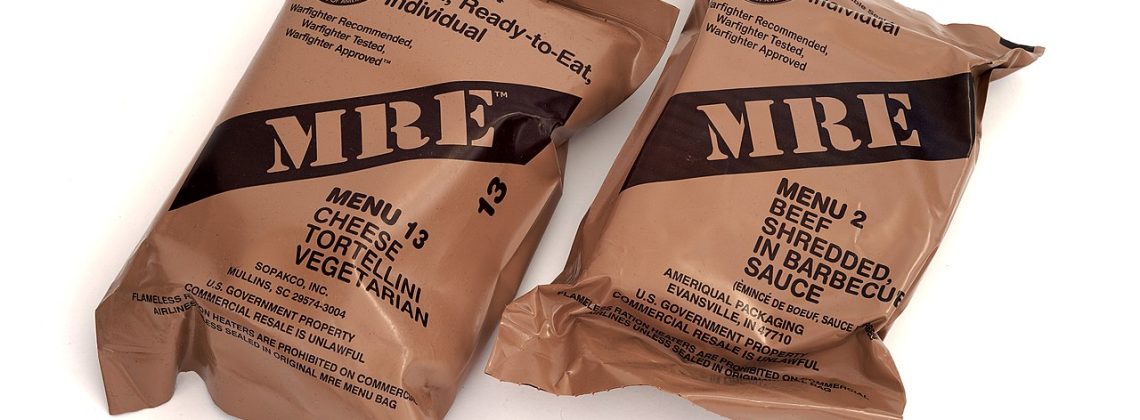
Meal, Ready-to-Eat (MRE) options have long been valued in military contexts for their convenience and caloric content, a feature which has gained them popularity among preppers seeking reliable food sources for emergency situations. These fully cooked, ready-to-consume meals come with an extended shelf life, typically between three to ten years, ensuring that you, as a prepper, have access to food that remains safe and edible even over long periods of storage.
The practicality of MREs lies in their compact packaging and the fact that they require no refrigeration, pairing well with the on-the-go nature of many emergency scenarios. Each pack typically includes a main course, side dish, bread or cracker, spread, dessert, and drink mix, making them an all-in-one solution to meet your nutritional needs. Being calorie-dense, MREs offer the energy that could be crucial in survival scenarios.
The variety of menu options and flavors available means there’s an MRE to suit a range of taste preferences. Understanding the pros and cons, as well as the nutritional aspects, can help you decipher whether MREs are the right fit for your preparedness plans. Whether facing natural disasters or other emergency situations, having MREs stored can be a step towards ensuring you and your loved ones are well-equipped for the unexpected.
Jump To Section
- Understanding MREs
- Pros of MREs for Preppers
- Cons of MREs for Prepping
- MRE Alternatives and Additions
- Using and Optimizing MREs
- Health and Safety Considerations
- Purchasing and Storing MREs
- Future of MREs in Prepping
Understanding MREs

In this section, you’ll discover the origins, makeup, and practicality of MRE’s, helping you grasp why they’re a staple for preppers.
History and Background
MREs were developed by the military to feed soldiers in the field without the need for food preparation. Their exceptional shelf life and the convenience they offer make them extremely practical in situations where traditional cooking is not an option.
What are MRE Meals?
An MRE meal is a self-contained, individual field ration. Each package is designed to provide a single meal for a service member, but they’ve also become popular among preppers, campers, and emergency response teams for their convenience and nutritional content.
Components of an MRE
An MRE typically includes:
- Entree: This is the main course, such as beef stew or spaghetti.
- Side dish: Often a rice, fruit, or vegetable item.
- Dessert: Could range from cookies to cakes.
- Cracker or bread: Usually comes with a spread like peanut butter or jelly.
- Beverage: From coffee and tea to sports drinks and milk.
- Snacks: A variety of items like nuts, dried fruit, or candy.
MREs also come with condiments, utensils, and sometimes an item to heat the food. The menu options are diverse; with various entrees and snacks, you can have different meals for days without repetition.
Pros of MREs for Preppers
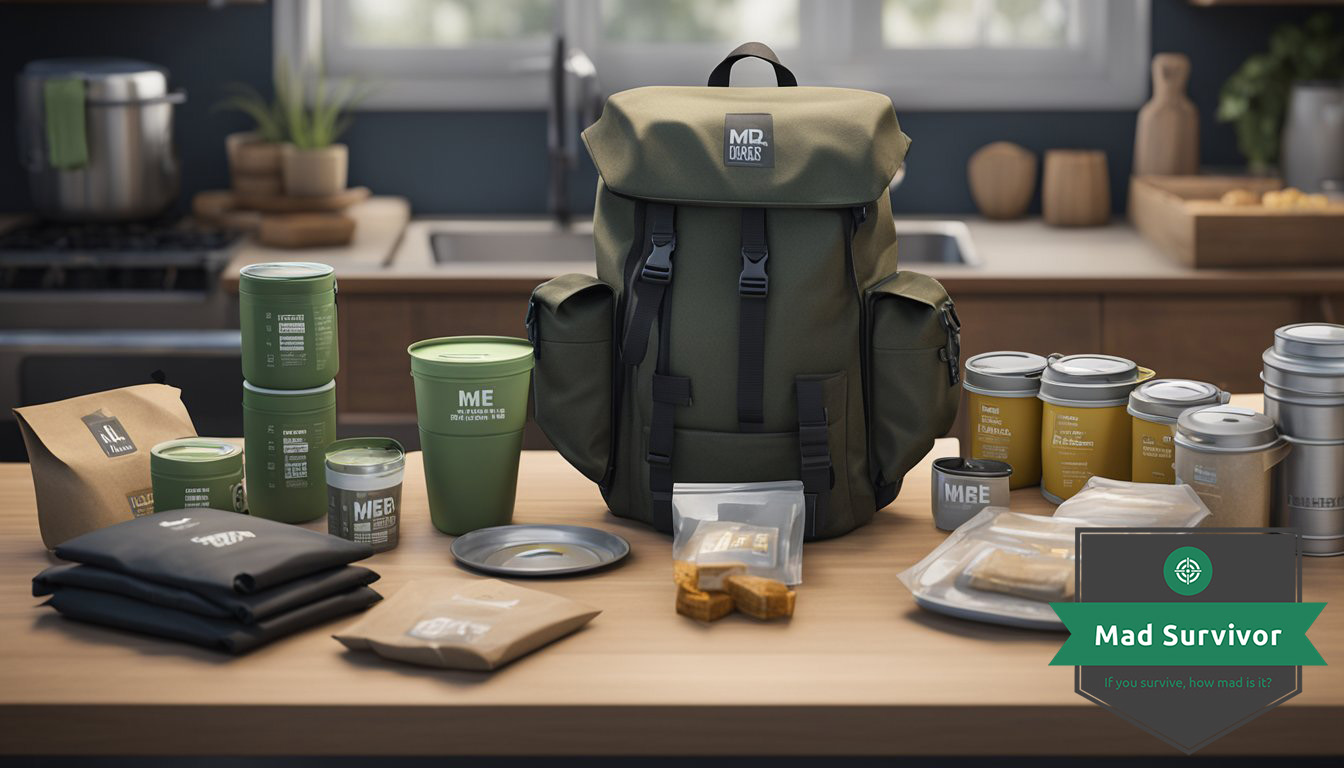
MREs, or Meals Ready to Eat, offer several advantages tailored to your needs as a prepper, focusing on durability, ease of use, and the range of options available.
Shelf Life
Your most crucial concern when stockpiling food is often how long it will last. MREs boast a shelf life of 3 to 10 years, depending on storage conditions. Specifically, keeping them at a lower temperature can extend their shelf life, ensuring they remain safe and nutritional for years.
Convenience and Portability
When you’re on the move or faced with an emergency, MREs shine in their compact and ready-to-use nature. You don’t need to gather fresh water or cookware, since MREs can be eaten right out of the packaging. Their design as a solid, self-contained unit makes them easily storable in a variety of spaces, ensuring you can grab them quickly when needed.
Variety and Taste
Long gone are the days of repetitive and bland survival meals. Modern MREs include a spectrum of menu options with a range of flavors to combat palate fatigue. They’re not just about calories and nutrition; taste is taken seriously to ensure that your meals are enjoyable as well as practical, making them a far cry from military rations of the past.
- Sample Menu Options:
- Beef stew
- Cheese tortellini
- Chicken curry
With these enticing flavors, you can look forward to your meals rather than view them as mere sustenance.
Cons of MREs for Prepping
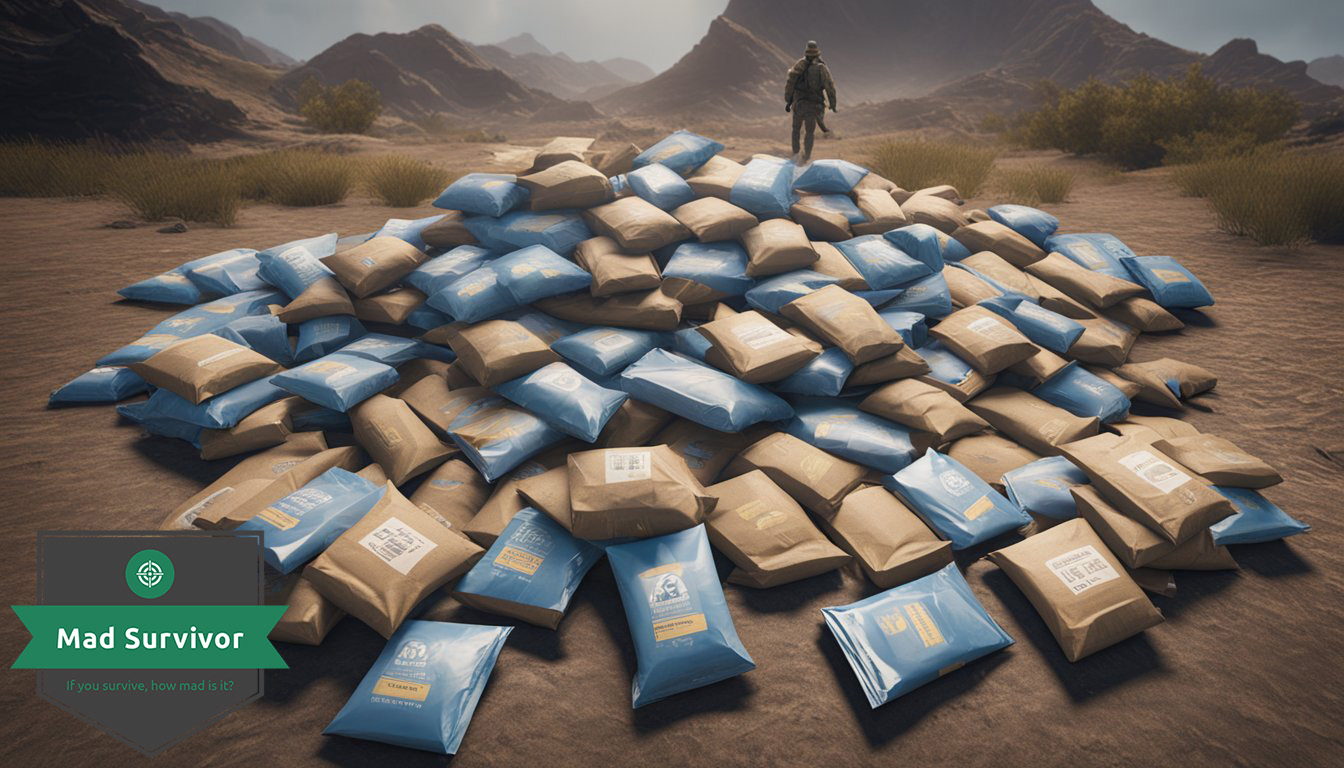
While MRE packages offer convenience, they have drawbacks that are important to consider if you’re prepping for long-term survival situations. Your choices will impact your nutrition, storage capabilities, and financial investment.
Nutritional Considerations
MREs are calorie-dense, designed to sustain active soldiers. Each package can contain around 1200 calories. For the sedentary, this can be excessive and can contribute to unwanted weight gain. Nutritionally, they are generally high in fat and sodium, which is not ideal for everyone’s dietary needs. The balance of protein and other nutrients may not meet your personal dietary requirements for everyday consumption.
Storage and Durability
Despite being designed for longevity, MRE shelf life can vary from 3 to 10 years depending on storage conditions. Extreme temperatures can degrade their quality quicker than expected. The packaging, while durable, takes up more space than other survival foods, which might not be ideal when you need to store large quantities or pack them for mobile scenarios.
Cost and Value
MREs can be quite expensive when considering long-term prepping needs. The cost per meal is significantly higher compared to other food storage options like bulk grains or legumes. While MREs offer convenience, their value may not justify the cost if you are looking to prepare on a budget. Plus, the price may reflect the self-heating technology and packaging rather than the quality or nutritional content of the food itself.
MRE Alternatives and Additions

While MREs are convenient, you might seek alternatives that cater to special dietary needs or simply desire more variety. These options can offer you long-term storage solutions that can be nutritious and tailored to personal tastes.
Homemade Prepper Meals
For a homemade touch, consider assembling prepper meals that align with your dietary preferences. Rice and tuna are excellent starts, providing a balance of carbohydrates and protein. You could also make cheese tortellini packed with your choice of filling. Store these in vacuum-sealed bags to ensure they stay fresh as long as commercially processed MREs.
- Ingredients:
- Rice
- Tuna
- Cheese Tortellini
- Instructions:
- Cook ingredients separately.
- Combine into single servings.
- Vacuum seal and label with date.
Commercial Emergency Food Kits
If cooking isn’t your thing (you really should look into that if you want to be a prepper), commercial emergency food kits are readily available. Look for ones that highlight a long shelf life and include vegetarian options if that’s your preference. Nutritious meal packs might contain a variety of freeze-dried or dehydrated meals that only require hot water to prepare.
Adding Variety to MREs
Adding variations to your MREs can help prevent palate fatigue. Consider supplementing with condiment packets, additional spices, or pocket-snacks to enhance flavors. Diversify your stash with a mix of MRE entrees like spicy penne pasta or chili with beans to keep mealtime interesting.
- Additions to Consider:
- Hot sauce or seasoning blends
- Dried fruit or nuts
- Popular Entree Additions:
- Spicy Penne Pasta
- Chili with Beans
Using and Optimizing MREs

Understanding how to heat and prepare MRE’s properly, along with some tips for consumption, can enhance your meal experience tremendously.
Heating and Preparation
MREs typically include a flameless heater that allows you to heat your meal safely without an open flame. To use the heater:
- Open the MRE package and remove the entrée.
- Place the entrée inside the heater bag.
- Add water to the fill line, and quickly seal the bag.
- Lay the bag on a slight incline with the entrée side on the bottom to ensure even heating.
- Wait about 12 minutes or until the entrée is sufficiently heated.
Tips and Tricks for Consumption
To make the most out of your MREs, consider the following tips:
- Hydration: MREs contain a high level of sodium, which is essential for preservation but can lead to dehydration. Always ensure to drink plenty of water when consuming MREs.
- Utensils: Use the spoon provided in your MRE pack or bring your own lightweight utensils to avoid being caught short.
- Mix and Match: Combine items from different MREs to create a more balanced or varied meal.
- Flavor Boost: Store some additional spices or condiments with your MRE stash to liven up the flavors if you find them bland.
By heating MREs correctly and following these tips for consumption, you’ll find them to be a reliable and satisfying option in your preparedness kit.
Health and Safety Considerations
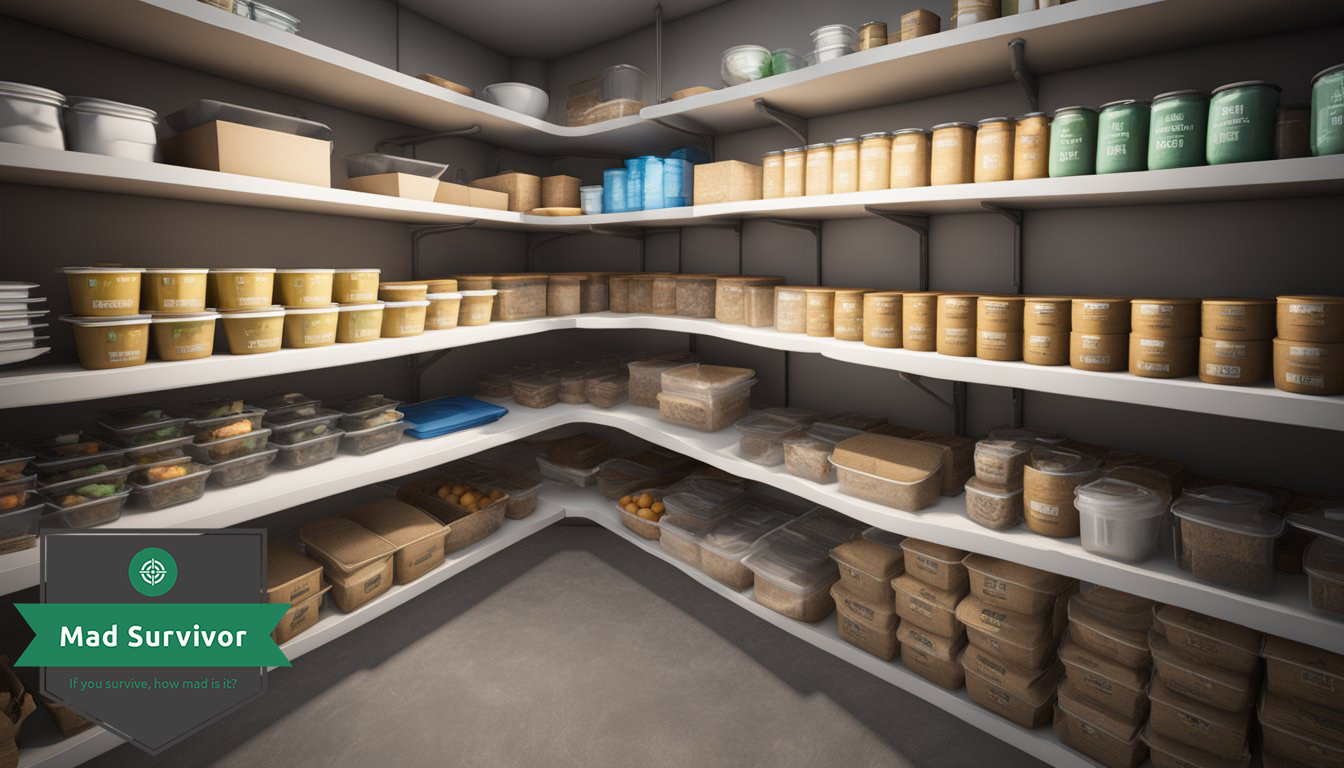
When you are considering MREs for your prepping supplies, it’s important to assess their effects on your health and safety. Pay close attention to how they might affect your digestion, any potential for allergic reactions or dietary restrictions, and the importance of expiration and packaging integrity.
Effects on Digestion
MREs are designed to be calorically dense to provide the energy needed in field conditions. However, they may cause constipation if consumed regularly over a period without sufficient fiber from other sources. To mitigate this, ensure you include high-fiber foods or supplements in your emergency diet.
Allergies and Dietary Restrictions
Check the manufacturer’s labeling for allergens, as MREs can contain common allergens such as peanuts, dairy, or wheat. If you have dietary restrictions, scrutinize MRE nutrition facts to ensure they align with your needs. A variety of options exist, but it’s crucial to read labels to make safe choices.
Expiration and Packaging Integrity
Every MRE has an expiration date that indicates its safe consumption period, usually ranging from 3 to 10 years. The shelf life is heavily dependent on storage conditions. Inspect the packaging for any signs of compromise, like punctures or seals that seem tampered with, as they can affect the safety and integrity of the food inside.
Purchasing and Storing MREs
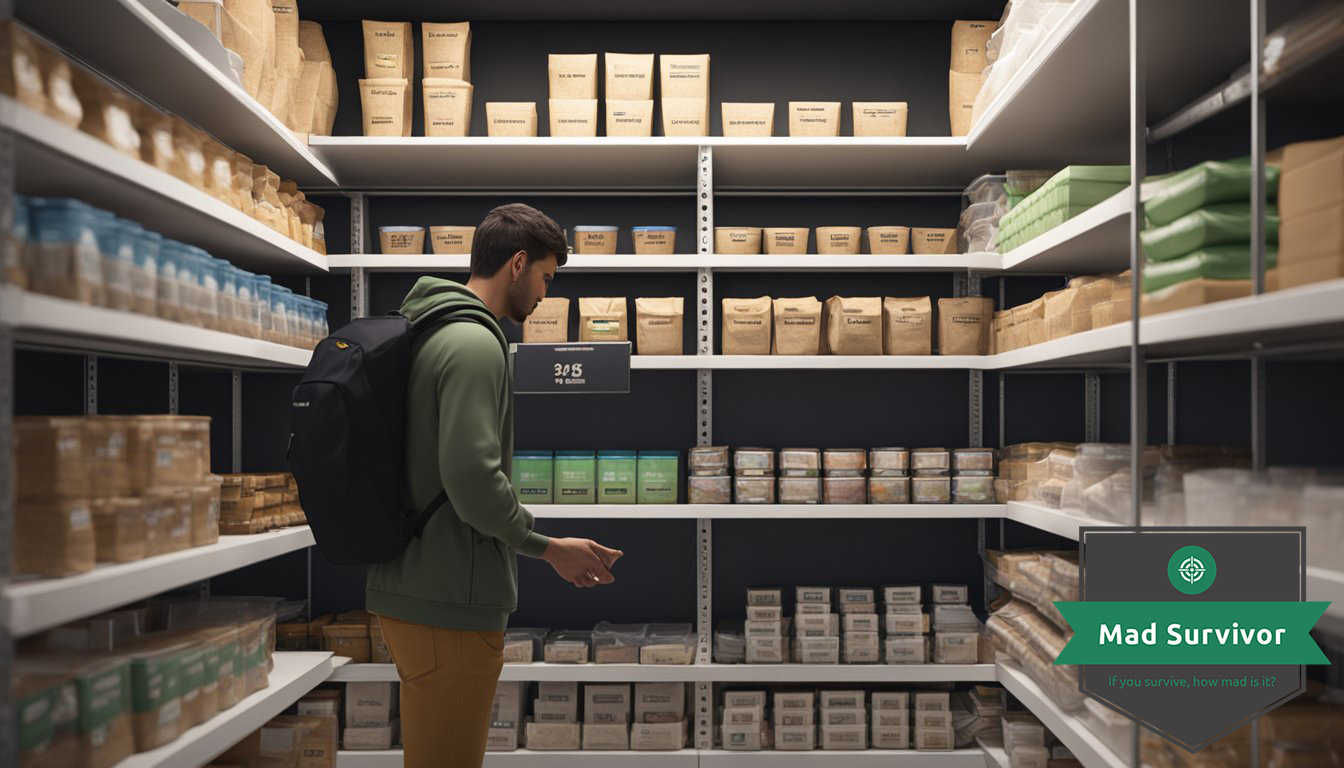
When planning for emergencies, it’s essential you understand how to properly purchase and store MREs to ensure they last until you need them.
Where to Buy MREs
You can purchase MREs from various sources, including military surplus stores, outdoor retailers, and online dealers. Manufacturers like Ameriqual, Sopakco, MRE Star, and XMRE sell civilian MREs directly or through dealers. Official military MREs, packed for the Department of Defense, are not legally for resale but often find their way onto the market. Do your due diligence to avoid counterfeit or expired products.
- Authorized Dealers: Ensure authenticity and quality.
- Online Marketplaces: Broad selection, but validate dealer reputation.
- Surplus Stores: Possible to find genuine military MREs, though civilian versions are more common.
Storing MREs for Longevity
The right storage conditions can extend the shelf life of MREs. Store your MREs in a cool, dry place away from direct sunlight. Ideal storage temperature is around 50°F. Avoid fluctuations in temperature to maintain the integrity of the packaging and preserve nutritional quality.
Evaluating Manufacturers and Dealers
When selecting MREs, consider the manufacturer’s reputation for quality and the dealer’s customer feedback.
- Apack, Ameriqual, Sopakco, MRE Star, XMRE: Well-known manufacturers offering different types of MREs.
- Customer Reviews: Check for consistent positive feedback regarding product quality and shelf life.
- Manufacturing Date: Look for clear packaging dates to ensure maximum shelf life.
Future of MREs in Prepping
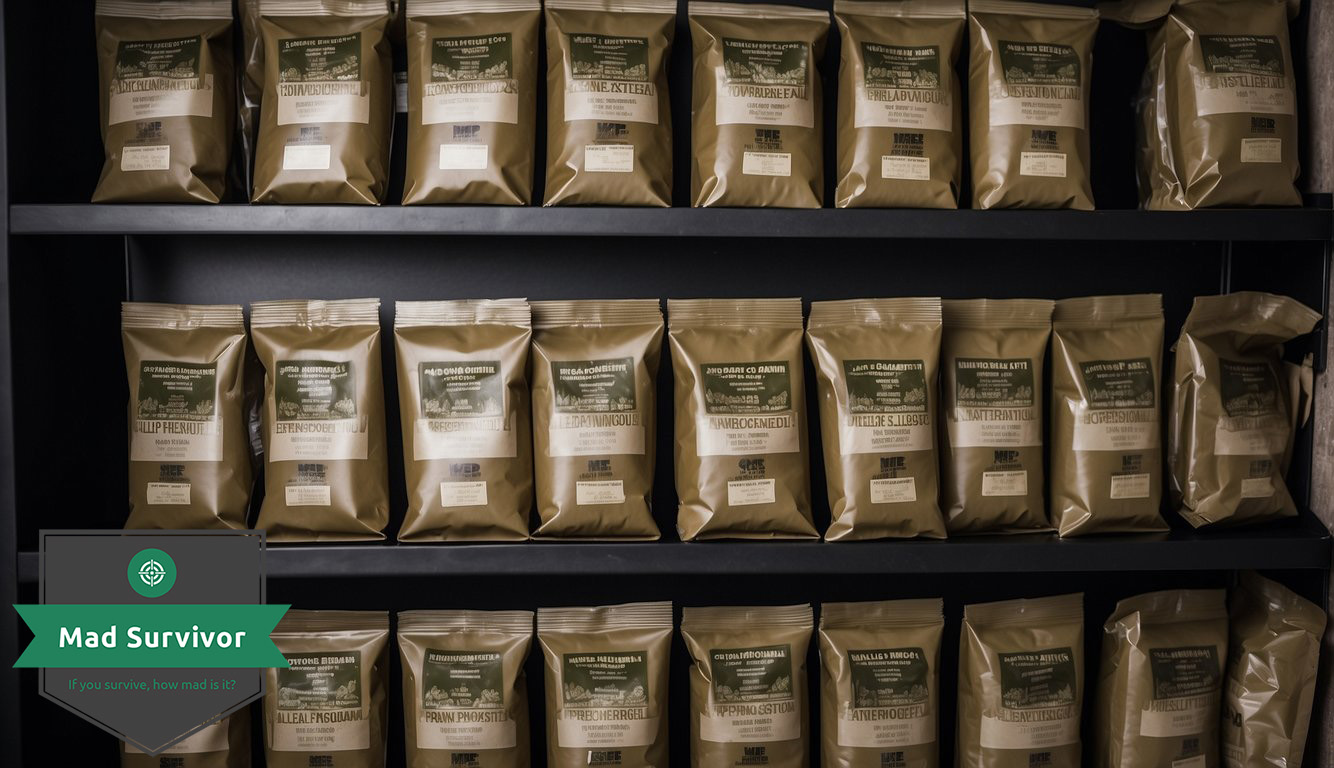
As you look towards the future, it’s clear that the landscape of emergency preparedness is ever-changing. Key to adapting to these changes is understanding the advancements in the technology of MREs and how emerging trends in prepping are shaping their use.
Developments in MRE Technology
In recent years, innovation in MRE technology has been focused on enhancing their shelf life and nutritional content. You can expect to see MRE packages that are even more robust, with preservation techniques that extend their usability far beyond the current 3-10 year threshold. This is pivotal, especially under varying storage conditions. With technology advancements, manufacturers are experimenting with nano-based sensors that may be integrated into the packaging, allowing you to monitor an MRE’s condition without needing to open it.
Another area of technological progression lies in the diversification of meal options. Driven by a diverse consumer base with specific dietary requirements and preferences, future MREs will likely encompass a wider variety of meals, including vegan, gluten-free, and meals that cater to specific cultural tastes. This way, you’re not just prepared, but your meals are also enjoyable and tailored to your lifestyle.
Emerging Trends in Prepping
Prepping trends are always evolving. With that, the demand for MREs is also changing to reflect a preference for sustainable and locally sourced ingredients. You may observe more MRE options that prioritize organic components. These support not just your need for emergency food, but also your values.
Additionally, there’s a noticeable trend towards integrating smart technology with prepping gear. In the context of MREs, this could mean packaging that interacts with your smartphone. It will provide details about nutritional information, preparation instructions, or even track your inventory of supplies. As you integrate more technology into your prepping strategy, these smart MREs could become an integral part of managing your emergency food stock efficiently.
Remember, the future of MREs in prepping is not just about food that sustains you in an emergency, but also about food that aligns with evolving preferences and technological enhancements.

Leave a Reply